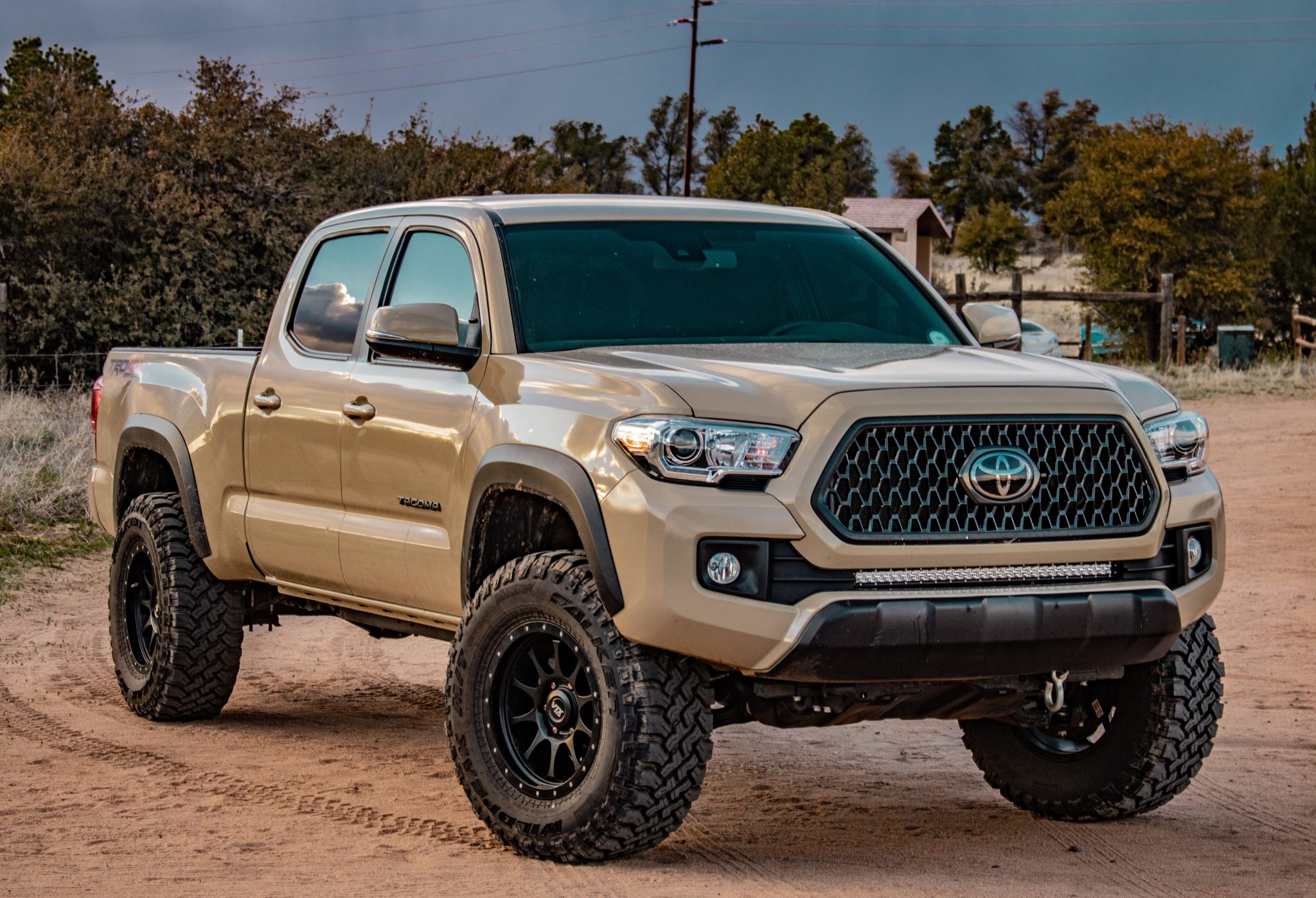It doesn’t take a lot to prepare your off-road rig for your daily commute, but a serious drive across the open country can take some forethought. No doubt you have read plenty of lists saying you need X and don’t leave home without Y. Many of those lists will recommend a leveling kit. Today we’ll get into what does a leveling kit do, how off-road tires compare and how you can keep your vehicle cruising safely on and off the trail.
Choose the Right Off-Roading Tires
Not all truck tires are created equal, particularly for dirt or mud trails. Consider the type of tread, rubber ,and wheel diameter you will need for your driving situation.
One of the first things you should do is be honest with yourself about your off-roading experience. Are you planning to head out to the mountains or forest trails every weekend, or is your rig more likely to live life on asphalt and concrete? Here are some basic tire types to consider as you compare tread styles and brand names:
- Mud
- Snow
- All-terrain
- All-season
- Sand
- Rock
Pay particular attention to the shoulders and tread style of your chosen tires. An aggressive tread may be great on muddy paths, but isn’t going to last very long if you’re driving on asphalt or gravel roads. It will also be noisy as hell.
Compare Wheel Sizes
Tires are only half the story of your complete off-road traction system. Your wheels seriously affect traction abilities. Start by considering whether the OEM diameter is appropriate for your application and consider swapping out your wheels for an aftermarket set.
Aftermarket wheels may need to be taller or shorter to give you adequate clearance or fill out your wheel arches. Carefully measure your wheel wells to see if you need a leveling kit or lift kit to accommodate aftermarket wheels.
Level Your Ride
Leveling kits are known for being mostly a style modification, but these kits do make an important impact on the amount of space available for new wheels. Some trucks and SUVs have plenty of room for the back axle to upgrade to larger tires, but don’t have much space in the front. A leveling kit may be just what you need to prepare for a wheel upgrade without investing in a full lift kit.
These kits may not have the same size options as lift kits, but you can still vary the height of your ride. Look for a 1, 2, or 3 inch kit to level the body of your vehicle. That should be all you need to get back on the level.
Consider a Lift Kit
When a few inches aren’t enough for the suspension and wheels you want, it may be time for a full lift kit. Instead of an inch or two, a lift kit can boast up to 18 inches of lift for a sky-high look and feel. Ride confidently over boulders and rutted roads with all that extra lift. Or just cruise into SEMA and get all those insta shares.
Just like a leveling kit, a lift kit should be carefully matched to your vehicle and driving situation. Too low, and you won’t have room for your aftermarket rim and tire combo. Too high, and you’ll have difficulties cornering and notice a decrease in fuel economy. You’ll also need a ladder just to get in and out…


